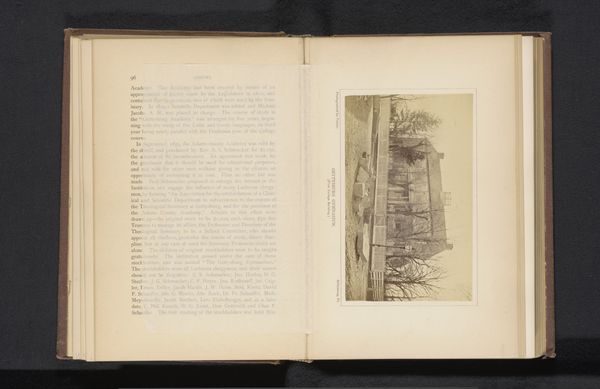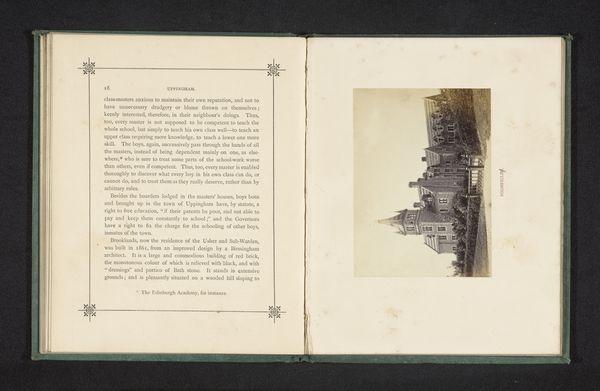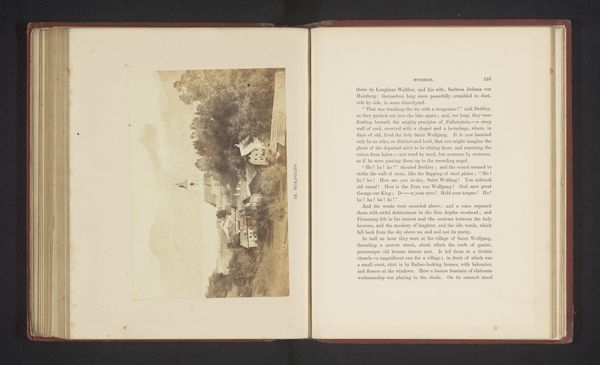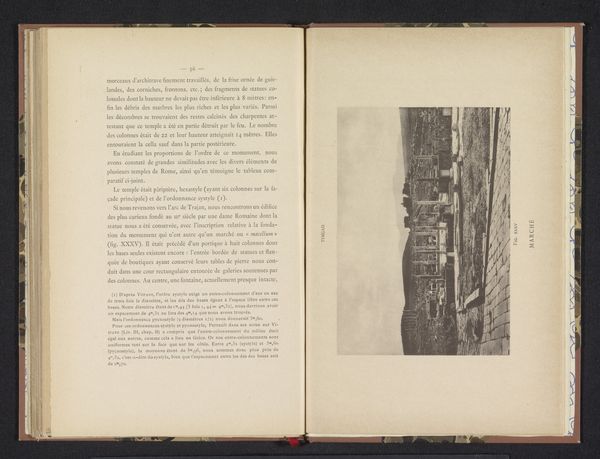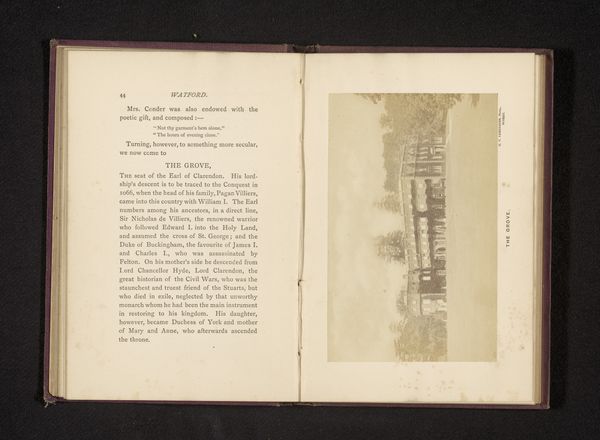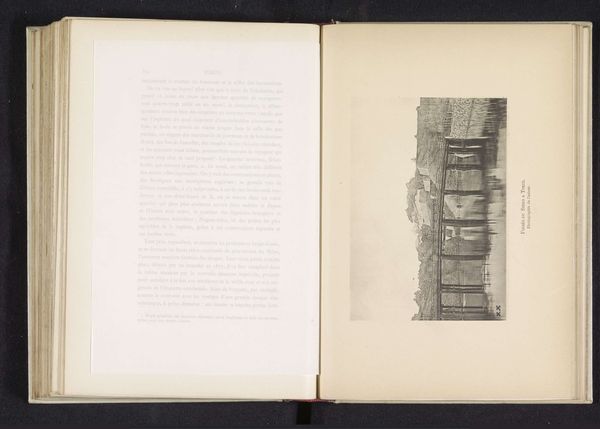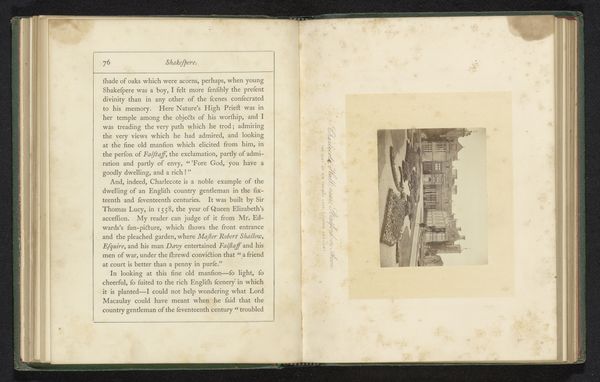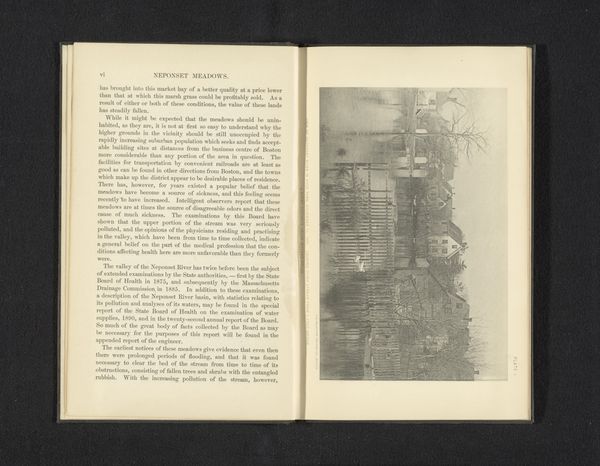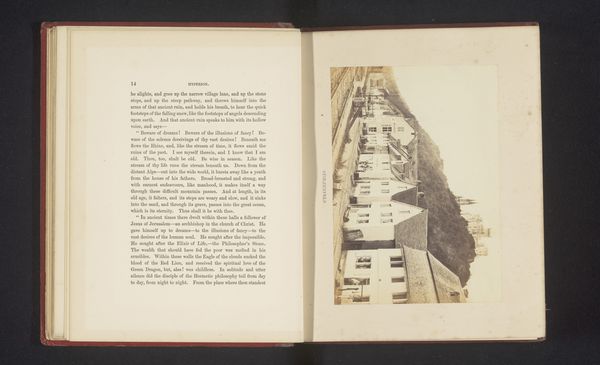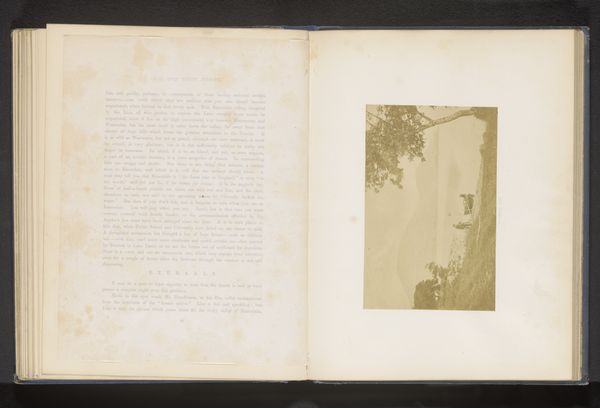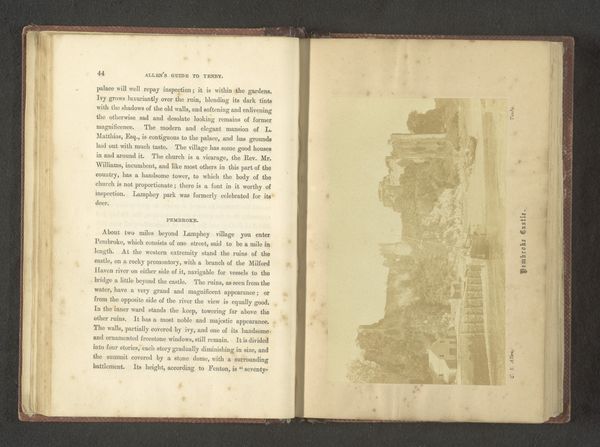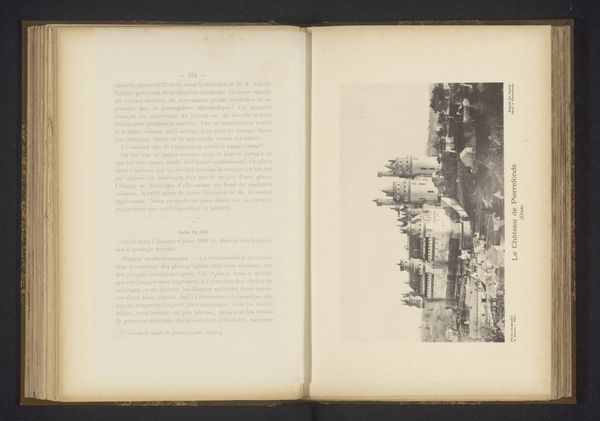
print, photography, albumen-print
# print
#
landscape
#
photography
#
cityscape
#
albumen-print
Dimensions: width 88 mm, thickness 139 mm
Copyright: Rijks Museum: Open Domain
Curator: This rather muted image gives us a view of Cassiobury House, attributed to H.V. Lemenager, and dated sometime between 1865 and 1870. It's preserved as an albumen print within an album. What's your immediate reaction to it? Editor: It evokes a feeling of distance and perhaps inevitable decay. The pallid tonality and somewhat hazy rendering lend it an air of melancholic remove, as if the scene is slipping from living memory. Curator: Precisely. As an albumen print, the process is particularly interesting. Created by coating paper with egg white and then silver nitrate, exposed to light through a negative, it represents an impressive convergence of chemistry and artistry. Consider also its formal composition: the imposing architectural structure contrasting with the soft landscape. It begs the question, what hierarchy of value are we seeing enacted here? Editor: I’m more drawn to how the medium itself impacts the narrative. The materiality of the albumen process speaks of meticulous labor—layers upon layers to capture this "slice of life." But doesn’t it also remind us of how representations, and power itself, can be painstakingly constructed? The tonal gradations and their manipulation speak loudly here. The focus on craft underscores the artifice inherent in these documents and our own reading of their historical narrative. Curator: That's a crucial point. The medium also speaks to the limitations of capturing space and light, imbuing the photographic reality with unique qualities. Here, you have subtle shifts in tonal balance—what appears in shadow versus light which produces dramatic impact, reinforcing perspective and even symbolizing aspects of status. Editor: Right, because photographic prints at this period had an economic component, too. An albumen print had become, by this period, one of the primary ways that middle class consumption fueled artistic expression. Not all that different, materially or conceptually, from the digital photographic archives of today. Curator: I see that connection, as this photograph presents a rigid hierarchy in spatial layout alongside a rigid economic and production process to create. Looking at its formal constraints in light of its medium brings this work, its historical importance, into sharper focus. Editor: Absolutely. And understanding the conditions of its making lets us appreciate both its artistic qualities and the material realities it reflects.
Comments
No comments
Be the first to comment and join the conversation on the ultimate creative platform.
